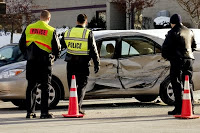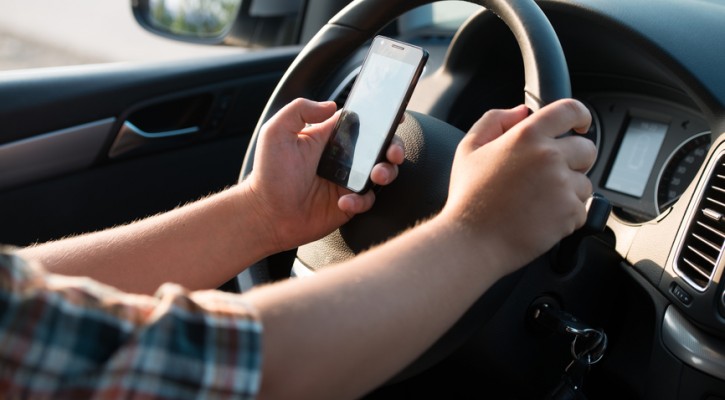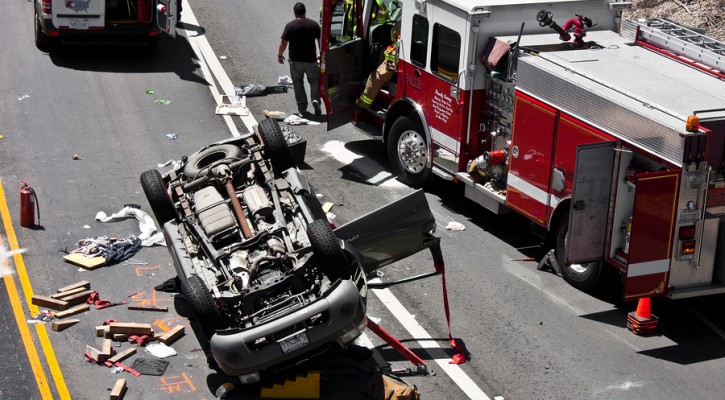Category Archive: Driving Skills

Teens Sharpen Driving Skills Using Collision Avoidance Training
February 26, 2007
Teens learn to drive by experience. However, many of the things that happen behind the wheel cannot be prepared for under normal circumstances. Reactions to blown tires, icy roads, and collisions are a few of the things that teen drivers do not know how control. Enter CAT Training.
CAT Training, otherwise known as Collision Avoidance Training, is offered many places nationwide. No place is it more needed, however, than at a local sports complex in D’Iberville, Mississippi. In this state, teens are allowed to be licensed at age 15, and without passing a driver’s education course no less. With the deaths of 26 young people in recent years, the time felt right to bring in such a program as CAT Training.
Here, in Harrison County, CAT training was given a trial run, and will soon be offered to the public for a nominal fee. The testing group included four school resource officers who will become the course teachers. Students selected by the officers also tested the course, which is said to provide experience that normally takes five to seven years of driving experience to gain.
This program is the first of its’ kind in Mississippi, and was made possible by the Partners for Highway Safety Foundation. After their son died at age 17 in an auto vehicle crash on Mother’s Day weekend 1992, Paul and Ann Burris created the Partners for Highway Safety Foundation in an effort to educate teen drivers of the dangers of risky driving.
National studies show that more than 70% of crashes that involve teen drivers or passengers are avoidable. Inexperience is listed as a factor more important than the abuse of drugs or alcohol in this statistic.
Future dates that the course will be held, as well as costs to attend, have not yet been determined. However, students interested can contact Harrison County officials for information, and they will be notified as soon as the course is open to the general public.

National Teen Driver Survey Highlights Distractions on the Road
February 15, 2007
It has been said time and again, that inexperience is the number one reason teen drivers and their passengers are at risk of injury or death as a result of car accidents. A combination of immaturity, inexperience, and indifference all add to the problem. Teen drivers haven’t had the opportunity to learn which distractions are dangerous when behind the wheel, and the consequences of letting those get in the way of safe driving.
When the community understands why teen drivers act the way they do behind the wheel, educating them becomes a whole lot more productive. Therefore, studies are done nationwide to determine the safe and risky habits of teen drivers and their passengers.
One such study, sponsored by Children’s Hospital of Philadelphia and State Farm Insurance Company, asked teens what actions performed during driving were unsafe. You might be surprised by some of their answers.
According to the National Teen Driver Survey, which gathered scientific data on more than 5,600 high school students, teens reported seeing the following distractions taking place at least some of the time:
- 93% said they see peers riding with teenage driver, who are often singing, bouncing in their seat or acting wild.
- 92% reported seeing teen drivers speeding.
- 85% reported loud music from cars of teen drivers.
- 79% said they see teens sing and even dance while driving.
- 76% said they see teens drive while struggling with negative emotions, such as failing grades or relationships.
- 53% said they see teens using hand held games and listening devices or sending text messages while driving.
- 38% said they have seen teens drive after smoking marijuana.
With distractions such as singing, dancing, or dealing with life’s problems, it’s easy to see why auto accidents are the leading cause of deaths for teen drivers. We all know how hard it is to drive while just changing the radio station, let alone holding and pushing buttons on a cell phone or mp3 player. Teen drivers need to know these distractions can be deadly, and hopefully this study combined with quality driver education classes will bring this issue to light.
Emergency Maneuvers Driving Course a Good Option for Teen Drivers
January 30, 2007
Teen drivers must pass a driver’s education course and behind the wheel training before they get their license. However, what prepares them for emergency situations once they begin driving on their own? This would be one of those times when learning by experience is not the best or safest idea. Unfortunately, chances are unless you and your teen live in an area with adverse weather, they will not get a chance to practice emergency situations until it is too late.
Now there are many new driver prep course options for parents and teen drivers who wish to be fully prepared when behind the wheel. Many cities are offering emergency maneuvers driving courses, usually at a fairly reasonable cost, that teach teens how to handle emergencies while on the road. Among the types of lessons learned, teen drivers will learn things such as how to steer out of a skid and avoiding overcorrecting when swerving to miss something or someone in the road.
It is hard to prepare teen drivers for emergencies, as experience really is the greatest teacher. Fortunately now parents can enroll their teens in these new programs for greater confidence on the road. A few such programs are the Street Survival and Driver’s Edge programs. Street Survival is sponsored by the BMW Car Club of America Foundation, and is staffed with automobile lovers and high-performance driving instructors. Because the teachers are volunteer, the courses are offered at an affordable rate ($60 for parent and teen, including breakfast and lunch).
Driver’s Edge is sponsored by Bridgestone, which is offered in a dozen cities for free. More and more these types of programs are becoming available. Though they are voluntary and not required for a teen to be licensed, parents will find the costs are worth the added confidence their teen drivers will have while driving.
While some insurance companies are offering discounts to safe drivers and those with a higher grade point average, most do not yet offer a discount for completion of an emergency maneuvers driver education course. There is still a misconception that the added confidence will add to more risky driving by the teens behind the wheel. Only time and statistics will tell if these programs are effective against the onslaught of teenage driving deaths. Until then, I recommend all concerned parents have their teens enroll in such a program, or at the very least teach their child the basics themselves.
Do as I Say, Not as I Do
January 16, 2007
Following those words may be more beneficial than you think, and it may even save your life. A recent study by Liberty Mutual and SADD concluded that about 65% of middle and high school teens will look to their parents as influences when they begin driving. What’s scary is the behavior the parents are unknowingly demonstrating to their teenagers is considered highly risky and factors for fatal car crashes.
Here are a few scary statistics that the report uncovered:
- 62% of high school teens reported that their parents talked on a cell phone while driving
- 48% of teens reported that their parents regularly sped, and
- 31% reported that their parents do not wear a seatbelt
Proof that teenagers do, or will, in fact mirror their parents driving behavior is as follows:
- 62% of high school drivers talk on a cell phone while driving, while about 50% of teens who do not yet drive say they will probably engage in such behavior
- 67% of high school drivers report speeding while driving, though about two-thirds of all teens who do not yet drive say will not speed when getting their licenses, and
- 33% of high school drivers say they don’t wear a seatbelt
What is strange is that a large percentage of teens do not believe these driving practices are risky, and the majority of teen drivers (89%) believe they are safe drivers.
- About 30% of teens believe it is safe to speed
- About 27% of teens believe driving without a seatbelt is safe, and
- About 27% of teens surveyed believe driving while talking on a cell phone is safe
This shows just how much a parent’s influence has over their child. It also is the reason why groups such as Liberty Mutual and SADD repeatedly stress the importance of a parent’s role in keeping their teens safe on the road. Knowing that their behavior is being mirrored may help them change their own driving habits, or at least help them realize they need to be properly educating their teen driver about safety.

Teens Are Not Immune to Death or Injury
December 20, 2006
In Mandeville, Louisiana, law enforcement and school officials alike are trying to spread the word about safe teenage driving. A forum on teen driving, titled “Teen Focus on Safe Driving: The Myth of the Invincible Teen,” was sponsored by the St. Tammany Parish School Board. The purpose of the forum was to show teens that they are not immune to being killed or seriously injured in a car crash, something that has unfortunately been proven lately by local teen drivers.
At the forum, teams gathered to learn from law enforcement officers, and medical and other driver education professionals. Presenters also showed a national award-winning video that warned teen drivers again of the risks they take every time they get behind the wheel. Not only are they putting themselves at risk when getting involved with poor choices and behavior, but they are putting others at risk as well.
Drinking and driving and not wearing seat belts were two of the most common risky behaviors addressed at the forum. An Associate Professor of Emergency Medicine at Louisiana State University, Dr. Todd Thoma, stated that almost 40 percent of auto fatalities are due to drinking and driving. And while new seatbelt laws have saved hundreds of thousands of lives, many more people still do not wear them.
The teams, which comprised of a school administrator, two school teachers or counselors, one parent and more than 10 students, gathered in groups after the presentations to brainstorm ideas on sharing what they learned to the rest of their classmates. Ideas such as staging mock accidents and how they could have been avoided by following the rules of the road and holding safe teen driving pep rallies were mentioned.
This forum showed teenagers that they need to be responsible when driving, and be aware of the safety issues and dangers involved. Teens can’t rely on parents and law enforcement officials alone to keep them safe – we need to remember that we are the ones behind the wheel, making the decisions. Hopefully this forum will have showed enough teens how to make the proper decisions, ones that just may save their lives.
